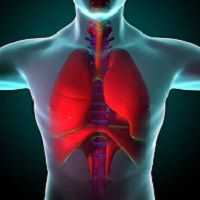Article
Asthma in Review: What Have We Learned This Past Year?
Author(s):
A presentation at the 2015 ACAAI Annual Meeting reviewed several key developments in the world of asthma that were published within the past year. The four main takeaways touched on the inhalant SB010, severe refractory asthma, medication during pregnancy, and the use of tiotropium.

There have been sparks flying when it comes to research for different asthma subgroups and treatment, and a presentation highlighting the important recent findings was given at the 2015 American College of Allergy, Asthma, and Immunology Annual Scientific Meeting (ACAAI 2015) in San Antonio, Texas.
Whether asthma onset takes place in childhood or adulthood, there are a unique set of challenges that come along with managing the condition. James T. Li, MD, PhD, FACAAI, from the Mayo Clinic in Minnesota, reviewed some key developments in the world of asthma that were published within the past year. The four main takeaways touched on the inhalant SB010, severe refractory asthma, medication during pregnancy, and the use of tiotropium.
Li began his presentation by speaking on an analysis featured in The New England Journal of Medicine. “Really this is a proof of concept trial,” he said. The GATA3 expression is an important transcription factor of the TH2 pathway, and the authors wanted to evaluate the safety and efficacy of SB010 in patients with allergic asthma.
Using primarily adults, the patients either took SB010 or placebo inhalation for 28 days. Although the primary endpoint was to assess late asthmatic response, the team actually found that treatment with SB010 significantly attenuated both late and early asthmatic responses after allergen provocation. Early response reduced by 11% for those in the SB010 group while it increased by 10% in the placebo group. For late response, SB010 attenuated the average late asthmatic response by 34%. Therefore, patients with allergic asthma can positively respond with SB010.
Asthma onset in adulthood can lead to aspirin-exacerbated respiratory disease (AERD) — a condition which combines asthma, recurrent sinus disease with nasal polyps, and sensitivity to aspirin along with other non-steroidal anti-inflammatory drugs (NSAIDs). Another presentation at ACAAI 2015 found that the majority of patients marked as having aspirin hypersensitivity do not actual meet the criteria for the diagnosis. Li referenced an analysis consisting of 27 articles that aimed to find the prevalence of AERD and aspirin sensitivity in asthmatic patients. The results showed that AERD is prevalent in 5.5% to 12.4% of patients, and they further went on to identify that 7% of patients have aspirin sensitivity — especially those with severe asthma.
Now what about severe refractory asthma? These patients suffer from frequent asthma attacks or low lung function despite the use of medications. Experts have estimated the prevalence of the condition, however, it may not be as prominent as believed.
A Dutch study of 65 pharmacy databases looked at 2,312 adults with adherence to prescription medication reaching over 80%. Those taking either high-dose inhaled corticosteroids/long-acting beta agonists (ICS/LABAs) or medium-dose ICS/LABAs with oral corticosteroids were identified. Only 3.5% of the patients, or 10.4 out of every 10,000, qualified for a severe refractory asthma diagnosis. The takeaway is that the condition may be lower than expert opinion when it comes to the strict definition.
For asthmatic pregnant women, should there be concern for congenital malformations from using medication during the first trimester? According to a recent study, that concern is unwarranted. The researchers compared 643 women taking long-acting beta agonists (LABAs) plus low-dose inhaled corticosteroids (ICS) versus 305 women on medium-dose ICS. They also looked at patients with severe asthma including 198 women on LABAs plus medium-dose ICS versus 156 women on high-dose ICS.
What is the difference? There weren’t any of statistical significance among the four groups. Congenital malformations occurred in the regular asthma groups: LABAs plus low-dose ICS (6.9%) versus medium-dose ICS (7.2%). It was observed in the severe asthma groups as well: and LABAs plus medium-dose ICS (7.1%) versus high-dose ICS (9.6%). Li says this “is a reassuring finding” and “it’s helpful for us as clinicians” because now medication combinations do not have to be ruled out because a patient is pregnant.
The final study Li touched on looked at the role of tiotropium in asthma. The analysis included 13 studies consisting of 4,966 patients which fell into one of the three scenarios:
- Tiotropium as an add-on to ICS
- Tiotropium in poorly controlled asthma compared with salmeterol (with ICS)
- Tiotropium as add-on to ICS/salmeterol combination
In the first scenario, there was a peak expiratory flow (PEF) increase (22-24 L/min) and forced expiratory volume in one second (FEV1) increase (140-150 ml). Also, they observed improved asthma control and a decrease in asthma exacerbations. No significant differences, however, were witnessed in the second scenario group. Those in the third scenario had reduced asthma exacerbations (risk ratio: 0.70) and increased pulmonary function (80-120 ml). Based on these findings, it certainly appears that tiotropium has a role in the treatment of mid-moderate and moderate-severe asthma. Although there have been questions of concern about the safety of tiotropium, long-term studies have seemed favorable, Li explained.
There are certainly a lot of moving parts when it comes to asthma control and treatment, but if this next year is anything like this past one, we’re in for many more helpful explanations.



